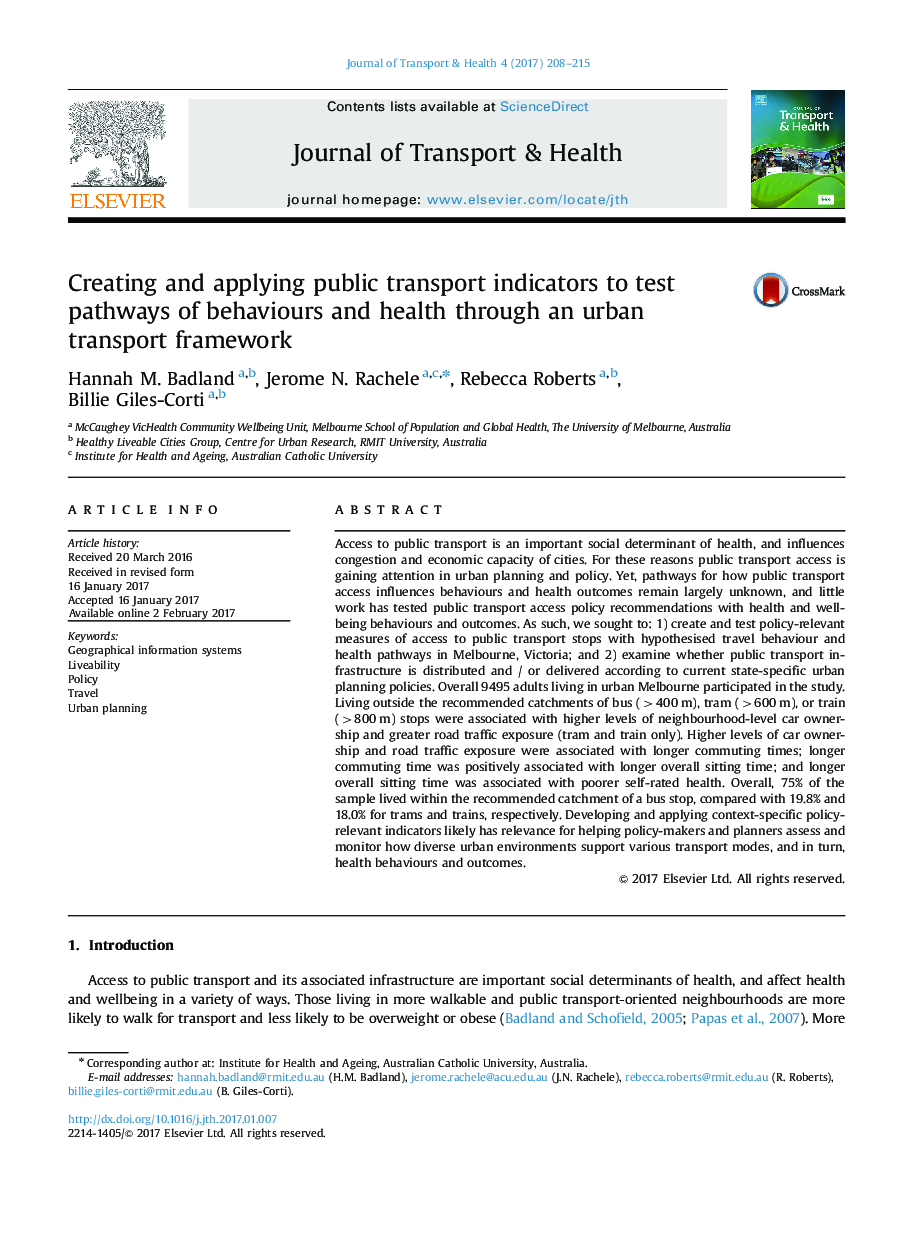| کد مقاله | کد نشریه | سال انتشار | مقاله انگلیسی | نسخه تمام متن |
|---|---|---|---|---|
| 5117874 | 1485457 | 2017 | 8 صفحه PDF | دانلود رایگان |
- We tested urban planning public transport catchment recommendations with behaviours and outcomes.
- Residential distances to public transport stops were associated with favourable outcomes.
- These indicators can be used for comparing access to public transport stops within and between cities.
Access to public transport is an important social determinant of health, and influences congestion and economic capacity of cities. For these reasons public transport access is gaining attention in urban planning and policy. Yet, pathways for how public transport access influences behaviours and health outcomes remain largely unknown, and little work has tested public transport access policy recommendations with health and wellbeing behaviours and outcomes. As such, we sought to: 1) create and test policy-relevant measures of access to public transport stops with hypothesised travel behaviour and health pathways in Melbourne, Victoria; and 2) examine whether public transport infrastructure is distributed and / or delivered according to current state-specific urban planning policies. Overall 9495 adults living in urban Melbourne participated in the study. Living outside the recommended catchments of bus (>400Â m), tram (>600Â m), or train (>800Â m) stops were associated with higher levels of neighbourhood-level car ownership and greater road traffic exposure (tram and train only). Higher levels of car ownership and road traffic exposure were associated with longer commuting times; longer commuting time was positively associated with longer overall sitting time; and longer overall sitting time was associated with poorer self-rated health. Overall, 75% of the sample lived within the recommended catchment of a bus stop, compared with 19.8% and 18.0% for trams and trains, respectively. Developing and applying context-specific policy-relevant indicators likely has relevance for helping policy-makers and planners assess and monitor how diverse urban environments support various transport modes, and in turn, health behaviours and outcomes.
Journal: Journal of Transport & Health - Volume 4, March 2017, Pages 208-215
